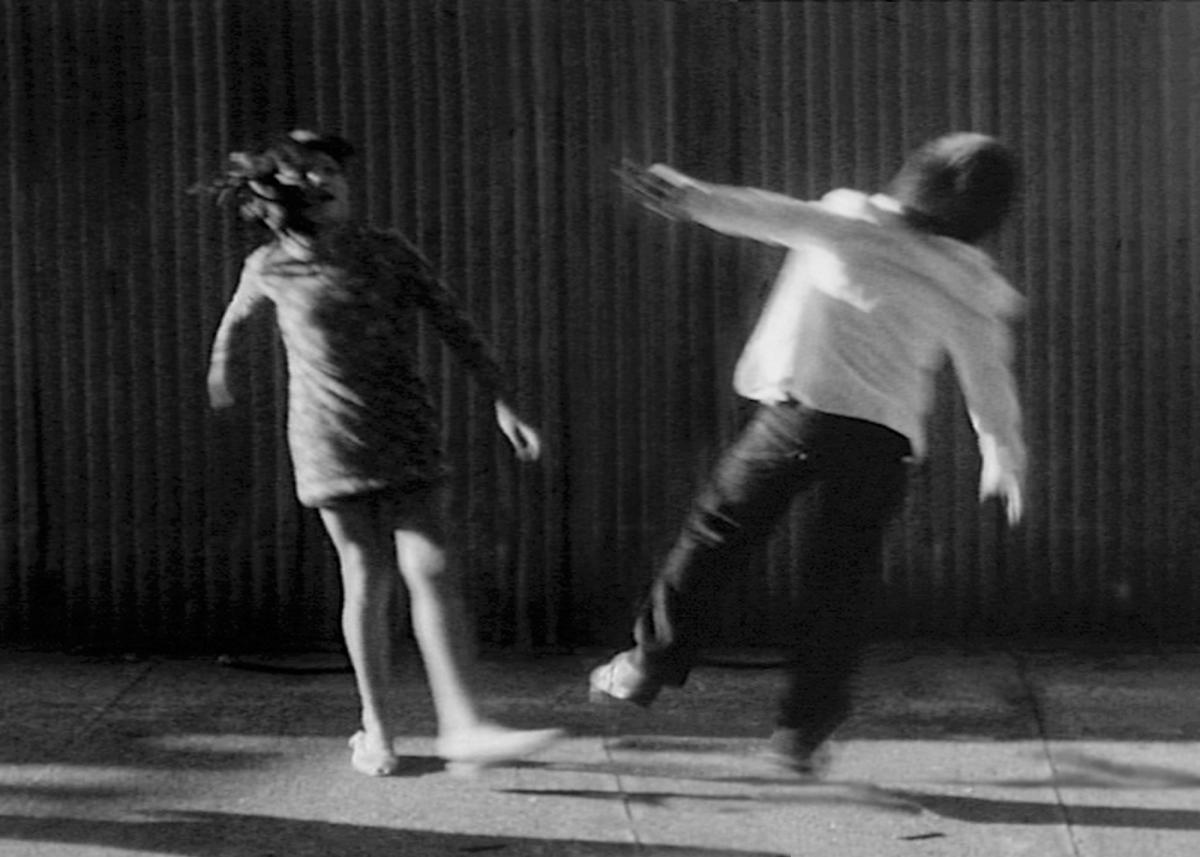
I remember watching Leslie Thornton’s avant-garde classic, Peggy and Fred in Kansas in an artists’ film class in college. A lot of what we watched before this had been abstract or minimalist works that foregrounded the material qualities of celluloid film itself and rejected any semblance of narrative, an impurity from Hollywood productions and mass media. Thornton’s eleven minute “episode,” one piece of the Peggy and Fred in Hell project that would unfurl across her career from 1983 to 2015, was a refreshing antithesis – a feminist punk reset of experimental filmmaking’s aims and inclusions. This was about something—namely, life after apocalypse, something I’ve always been very interested in. It was also explicitly engaged with mass media—not trying to ignore it, but rather demanding we look at its power in shaping people and society. And it focused on a subject I’d never seen taken seriously in either Hollywood or art films—the experiences of children, amongst themselves, as they become themselves, and as they make sense of the world around them.
Fast forward…um, a long time…and this was the first artwork I thought of when considering how SAAM’s collection might speak to the experiences of a global pandemic. Like Peggy and Fred, many of us found ourselves cut off and isolated, perhaps sharing close quarters with a family member or two and relying on media as our sole connection to an emptied and eerie landscape outside. My memory of these two kids on screen, unselfconsciously playing house and bickering, repeating lines they’d heard on TV, singing to themselves to start a spontaneous dance off, it seemed suddenly all too close to home, like a camera had been installed in my apartment. As it turns out, surveillance is an important subtext across the Peggy and Fred project, too, brilliantly anticipating our current relationships to technologies that track, record, and watch us.
But perhaps most relevant to experiences since March 2020, is the dread that lingers at edges of the film, in clips of found footage that imply an unknown calamity beyond the protagonists’ basement bunker. Not knowing what happened to their world, we can’t know when it might be safe for them to venture outside—a feeling that still resonates, as I monitor data points to understand the danger level of my surroundings each day.
In the 1980s, when Peggy and Fred in Hell began and the Cold War was still hot, the threat of nuclear war was on everyone’s mind, and particularly present in Thornton’s life. Her father and grandfather had both secretly worked on the Manhattan Project, developing the first atomic bombs for the U.S. military during World War II. This familial history informs her career-long consideration of the human impacts of scientific and technological advances. Her work encourages us to notice when innovations that promise increasing control of matter and environment turn on their makers when we realize that our discoveries control us rather than the other way around. This broader warning is what makes the Peggy and Fred project so potent over the decades. We are asked to continually reevaluate which unleashed forces—whether atomic, biological, economic, fiberoptic—and which unforeseen effects, are most powerfully shaping the world today, and how future generations might understand and live in it the day after tomorrow.




















